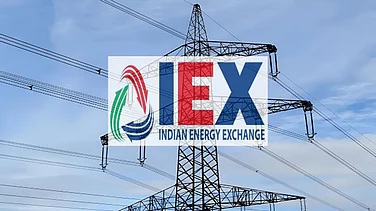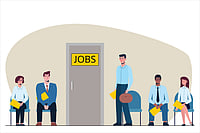Nirmalya Kumar has been observing the ups and downs of the retail business for decades—from Amazon’s pioneering of ecommerce to the recent rise of quick commerce. He served as a strategy leader in the Tata Group when Cyrus Mistry was chairman. In his recently published book Clash: Amazon versus Walmart, Kumar, who currently teaches at the Singapore Management University, has analysed how two of the world’s largest companies run the retail industry.
Outlook Business spoke to Kumar on his views about disruptions in the retail space, quick commerce companies and how big Indian conglomerates like the Tata Group and Mukesh Ambani’s Reliance fare in the battle against Amazon and Walmart-owned Flipkart.
Edited Excerpts:
From your many years of studying the retail industry, including in its online avatar, what is your one major takeaway?
All these gig economy companies, as well as Amazon’s retail operations, as I have shown in my book, are loss-making companies. They make losses on every online order. So, the more they sell, the more money they lose. Now the question is—why are they doing this? It took Amazon 25 years to figure out that the reason to do this is that you will make money on advertising.
Five years ago, Jeff Bezos did not believe in advertising. I suspect that for all gig economy companies, there is a feeling that once you dominate a platform, you will have a lot of data, which you can then monetise. But you cannot make money in the fundamental business of delivering cheap, low-value products and delivering them.
Amazon has caused a behavioural change among its users, and now many new ecommerce entities are attempting another change with their delivery speeds. For new players trying to enter this space, is it possible to reverse these changes or will they have to cater to the 10-minute delivery habit?
No. Not everyone has to try and reverse the model. New businesses can compete in different ways. For example, there are retailers who say they will not do online delivery and yet they are as successful as any other retailer. They will leave the loss-making part of the delivery to these quick commerce companies and not engage in it because there is no money to be made. So, while customer behaviour may not be reversible on its own, the question is—whether a price penalty can impact their behaviour?
The answer is: if you increase delivery fees, then a percentage of people will stop ordering online. Or at least, they will stop ordering online as often.
Will new businesses then be able to compete in scale? Because incumbent quick delivery players already operate at a very large scale?
They do not need to scale. When you make money on every order, as opposed to the quick commerce model, it does not matter whether you sell a few products or a very large number. You are making money in any case.
Apple stores are a good example of this, they are very happy with their sales. They are the most profitable store in terms of sales per square foot. Aldi and 7-Eleven are all very happy doing what they are doing, selling out of retail stores. The fundamental point of Amazon versus Flipkart is that there is a role for online and then there is a role for online. It is true that online as a percentage of retail will go up, but that does not mean physical retail has to come down, especially not for players who have a strong value proposition of price, convenience and experience.
Across geographies, are there any examples of the online grocery retail model becoming profitable at the unit economics level?
At one point, China had 200 online grocery retail start-ups. All 200 have gone bankrupt now. You have to understand that in India, the average grocery order is going to be about 500 rupees, not much more than that. There is a 25 per cent gross margin in that business, so that is Rs 125 of gross profit. Now, all that and more goes into logistics costs including wages for the delivery person.
You can keep saying that the economies of scale will take over or whatever. But when you do unit order economics, you realise that it does not matter which country, the economics remains the same. And all this is after we exploit people. If we stop exploiting the people and pay them fair wages, then there is no chance of making a profit. Then it becomes a question of what other revenue streams you can come up with.
Talking about revenue streams, can ecommerce players like Amazon eventually trump Meta and Google to become the most preferred ad platforms?
Amazon is very good for advertising for one simple reason. When I am a customer, I go on Amazon when I am in the mood to shop. I am there to shop and for no other reason. If Amazon recommends a product that meets my needs and wants, then, with just one click, it goes into my basket. One click is all that is required. Amazon and other retail sites have a great opportunity for advertising, no doubt about it.
But for food delivery, it is somewhere in the middle. Instant grocery shopping platforms have some opportunities for sure. But for ridesharing apps, it is very limited. Assume I am in an Uber [cab]. I am in a car going from my office to my home. What are you going to advertise? The moment the car comes, I shut the app. There is not a lot of scope for advertising. So just because it is an online loss-making model, it does not mean the opportunity for advertising is equal across platforms.
In India, we are seeing food delivery platforms get into quick commerce (Zomato with Blinkit and Swiggy with Instamart). Do these adjacent businesses help maximise revenue or achieve better pricing while operating within existing networks and infrastructure?
Here, the capability needed is not much. There are no entry barriers. All you need is an app, which costs nothing to build nowadays, and you need to hire the drivers. Then, you need to get the supply side signed up. But the problem is that delivery fees cannot increase in these segments because every customer has both Swiggy and Zomato. Every restaurateur and delivery person has both. The moment you increase the restaurant commission, they go to the other platform.
The moment you increase the delivery fee, the consumer goes to the other. The moment you reduce the delivery person’s commission, they move to the other platform. There is no competitive moat on any factor. So, the pricing power of these platforms will remain extremely limited.
How will the government initiative of an open protocol in the form of the Open Network Digital Commerce (ONDC) impact this space?
What they are doing is that small retailers can get online without having to go through the quick commerce private players. It is a way for everybody to get online and make the space more accessible. It is a sort of a level playing field then. But who does this level playing field help?
The shopkeepers will still complain that they pay too much commission, delivery people will complain that they do not get enough money and consumers will eventually complain about delivery charges. If everybody is complaining and the platform is still not making money, it is a bad business model.
Now, you can open a government online retail store too. But soon you are going to find out that it is not making money. After you study it, you will realise that the limitation of the model is there is no profit per order. Eventually, a lot of these delivery companies end up looking for a chunk of the revenue to come in from an advertising perspective.
In the book, you say Amazon India’s operations are fundamentally stronger than that of Flipkart—Can you explain why?
Firstly, every customer you speak to in India will tell you that the customer service of Amazon is far superior to that of Flipkart. That is Amazon’s raison d’etre. They have always been into the best customer services practices in the world.
Secondly, they tell you the delivery of Amazon is also better in terms of reliability.
Thirdly, what I hear from inside sources is that Flipkart has gotten too much into pumping its GMV [gross merchandise value] with mobile phones and such high-ticket things where the margins are very small. Amazon, in contrast, is building a very big business where margins are more respectable.
Amazon is doing a lot of private labels in its products, like big clothing businesses which allows them to get better margins. That is why I feel, in its current incarnation, Amazon is a fundamentally stronger business than Flipkart.
Exclusive phone sales bring some excitement to Flipkart, for sure. The GMV goes up dramatically because otherwise one would have to sell a lot of clothes to get to the smartphone level of sales figures. So, if your investors are asking about your GMV, then you can always show these figures. GMV is an important metric only because they do not have profits. For profitable entities, GMV is not a big deal. This does not mean Flipkart cannot change and become better in the future, but in its current incarnation, Amazon is building a greater and more resilient long-term business.
In the book, you mention Reliance’s retail presence amid the whole Amazon versus Flipkart showdown. Where do you think Reliance is headed?
It could be an interesting competition. Reliance versus Amazon can be India’s big ecommerce clash in coming years. Today, for the most part, Jio [part of the Reliance group] has a hefty online presence. With its physical presence, there are some aspects that can help you in online retailing. First is that it allows you to offer click-and-collect to customers, which you cannot do as an online-only player. Secondly, it allows you to make returns in stores, customers prefer that.
With its digital and physical infrastructure, Reliance can have some edge in groceries also maybe. But remember, omnichannel can only help so much as we have seen with Amazon versus Flipkart. Basically, the thing over there is that you will have two players with a lot of money and a lot of staying power. The only person who will eventually benefit from this is the consumer.
Where does the Tata group stand in the ecommerce segment given, they have invested billions into their ‘super app’ and have made acquisitions on the delivery side of things?
Just because you have a billion dollars or a ‘super app’, if you do not have a customer proposition, it does not matter. What is their differentiated proposition versus Flipkart or Amazon?
This whole ‘super app’ proposition had some amount of success in the Chinese market because all foreign players are banned there. In the Indian market, you have specialist foreign players operating. You do not need a ‘super app’ in India because for all your social needs you have Twitter and Facebook, both of which are banned in China. For your retailing, you have Amazon which is banned in China. For social messaging, you have WhatsApp, which is also banned in China.
From all the people I have spoken to, almost none are using the Tata Super App (Tata Neu). At some level, there might not be any users except for maybe the 650,000-odd Tata employees.
Do you anticipate any disruptions soon in the global digital commerce space?
The next big disruption in this industry is a small one that is already playing out. It is that a lot more online retailing is going to go through the social commerce route. So, you will see companies like Instagram offer much more shopping, because it is built around making shopping easier.
In India too, there will be an opportunity where YouTube celebrities will talk about their favourite products and viewers will rush to get that. And with one click, you can order and get the product home, like what played out with Alibaba in China.


























